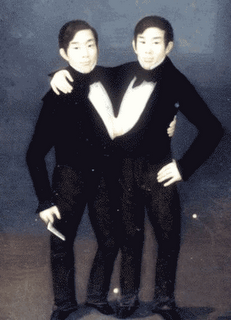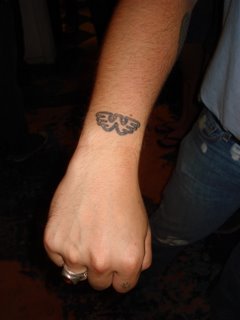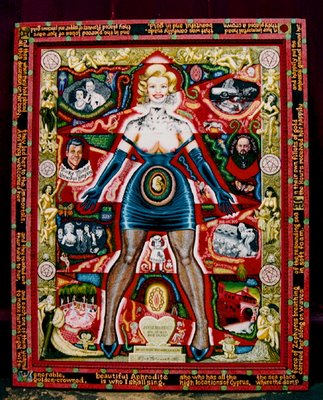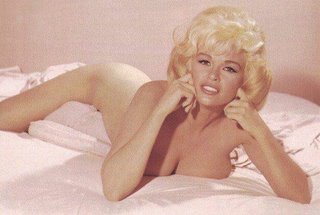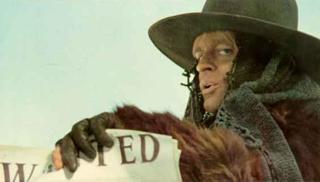 The Searchers
The SearchersI've been living in New York too long when I no longer pay attention to the racism, brutality, and turmoil between man and his environment in this John Ford classic and instead realize how terrible John Wayne looks in his jeans. Especially with that Pizza Hut shirt on.
The Shooting
Ride in the Whirlwind
I watched a wretched DVD transfer of The Shooting last year, one almost swallowed up in glare and blackness. A recent Monte Hellman retrospective at BAM brought The Shooting back around though, and I found its off-the-cuff, frantic shooting pace to be intact, the evening shadows strong on some scenes, yet with just a bit more detail caught on the big screen.
What I said over at Imbidimts:
Banged out in 1967, you wouldn't be able to guess its place in American history unless you could tap into the edginess of the times, and then the fear and loathing is not just palpable, but seething and bile-forming. It's a ride of attrition, cruel to both man and the horse (even a bluebird is shot for spiteful sport), as Warren Oates and a ranchhand help a woman bent on revenge track the offending party that may or may not be his brother, while psychopath Billy Spears (played by Jack Nicholson) trails the party. Weary bodies, already sick of the killing (the cruelest threat is getting your face shot off) are trapped to struggle along with and depend on for survival with truly awful sorts. A simple man like Oates (who is just searching for his brother) is forced to associate with sociopaths and vengeful people, where revenge is the only principle, the taste of blood paramount to slaking of hunger, thirst, sanity. He becomes one of them, not killing Spears when he has the chance (and exact revenge on him for killing his buddy in cold blood) but instead smashing his right hand so that he can never shoot again. The slo-mo ending feels like one of those dreaded dreams where your body won't respond to stop the madness, much less salvage itself. All feel helpless and staggering afterwards.Shot at the same time as The Shooting, Whirlwind also stars Jack, and has QT citing it has his favorite western. The movie hinges on some awkward cowhand dialogue, hapless shootouts, and a meditation on innocence. Three good ol' boys get mistaken for horse thieves and are hunted down by lawful vigilantes. Such a hunt isn't nearly as desperate as that in The Shooting, but the outcome is more subtle, still as devastating. As the innocent turns into a killer, that is when the escape is finally made.

The Great Silence
It's not on the level of white hat and black hat dynamics, but this Spaghetti western deals itself some ludicrous platitudes. One of five movies cranked out in 1968 by Sergio Corbucci, we have one guy whose Xian name is "Silence," with Jean-Louis Trintignant pulling off a finely unshaved (save for that gnarly throat scar) mute, even giving Warren Oates a run for his money. His nemesis is named "Loco." Guess which one is played by Klaus Kinski? As blatant as the character set-up is, and as hokey and overdubbed the lines get, this hasn't fallen down the memory hole due to its brutal, kill 'em all ending that drops you through the floor like a gallows swing door.
The Byrds - There is a Season
Gram Parsons - Complete Reprise Sessions
David Crosby - Voyage box set
The glossy photo that flutters out of this parcel has two pictures of the Byrds; Gene Clark, the founding member and primary songwriter at the time, is in neither one of them. The Tom Petty introduction doesn't even mention the man. Joe Tangari's otherwise adept review of the box set scarcely mentions him. Imminent on the racks is a box set for Walking Proof of There Being No Cosmic Justice, David Crosby. Hell, even thumbing one of those Back Page Epiphanies in a recent issue of Paste Magazine, I suffer through Andy Whitman masterbating over the grave of Gram Parsons. Where is the Gene Clark box set? I howl. I'm not the only one, and the Byrds box mentions how taken Bob Dylan was with Gene Clark's writing, even back then, when Clark was but hoping to bite the man's style. There's a Dylan quote somewheres wishing that he himself had written Clark's meditation on the creative act, "From a Spanish Guitar," but on almost any of his peak material from White Light, The Fantastic Expedition of Dillard & Clark, Roadmaster, and No Other you can glean a searching soul peeking through. Almost any lyric reveals an astute eye with a mind not just on earthly matters, but what happens above as well. Or as Gene once sang: "There's always a reality in what you are doing. Sometimes it's so hard to see which one is the true one." It's a sad state that none of Gene's albums (aside from with the Gosdin Brothers and Echoes) are in print in the US, but only on German, British, or Japanese reissues. Tucked inside the perfect Expedition, in a lyric about a woman now gone, lies a line that acts like a gem, glimmering from inside the stanza: "A wise man said 'What isn't there is what you want to find.'" Guess that's directive enough to track these down.
This Awful DJ at Daddy's Saturday Night
He starts off playing "Do Ya Think I'm Sexy?" and at the table we laugh at where he could possibly go from there, as surely he's peaking early. How we swallow such guffaws like so much lukewarm Brooklyn Lager as the asshole in the booth turns KONO on our asses, dropping boilerplate like "Da Doo Run Run" and, no shit, "Brown-Eyed Girl."
Even if we were stuck in a van with only AM/FM in the wilds of Pennsylvania or Missouri, we'd be switching it to Christian rock or sports radio. After a night of a Daddy's DJ dropping 45s of Howlin' Wolf and Sir Douglas Quintet alongside the Breeders and Dinosaur, and with a jukebox stocked with some of the finest selections a waterhole can ever hope to have: George Jones, Charlie Feathers, Nuggets, New Orleans funk, a slew of tuff rocksteady cuts...I mean, such obviousness is unacceptable here at the Ground Zero of BK noize-hipsterdom, right?
So is this the new Sincere Irony? Is it the moustachio vs. beardo civil war that has long been threatened on the streets? Fuck, even Jack (or Bob, or whatever those random iPod radio stations keep popping up with Metallica next to "Hang On Sloopy" next to "Raspberry Beret") is more unpredictable than this guy. And yet, with our position near the ladies' room, we make a shocking discovery: as each occupant abandons her nose-powdering (both meanings), she comes out dancing!




